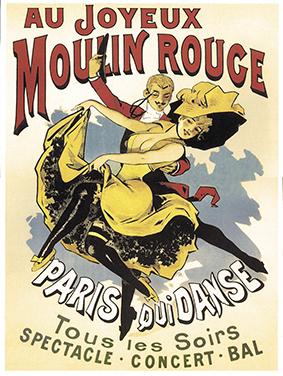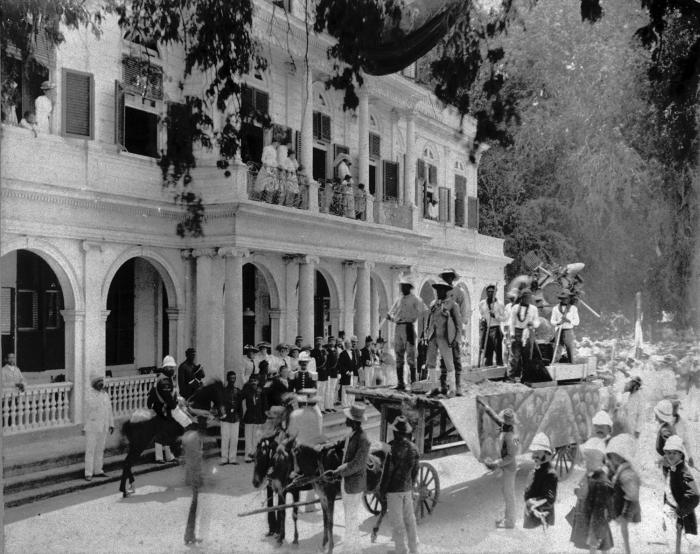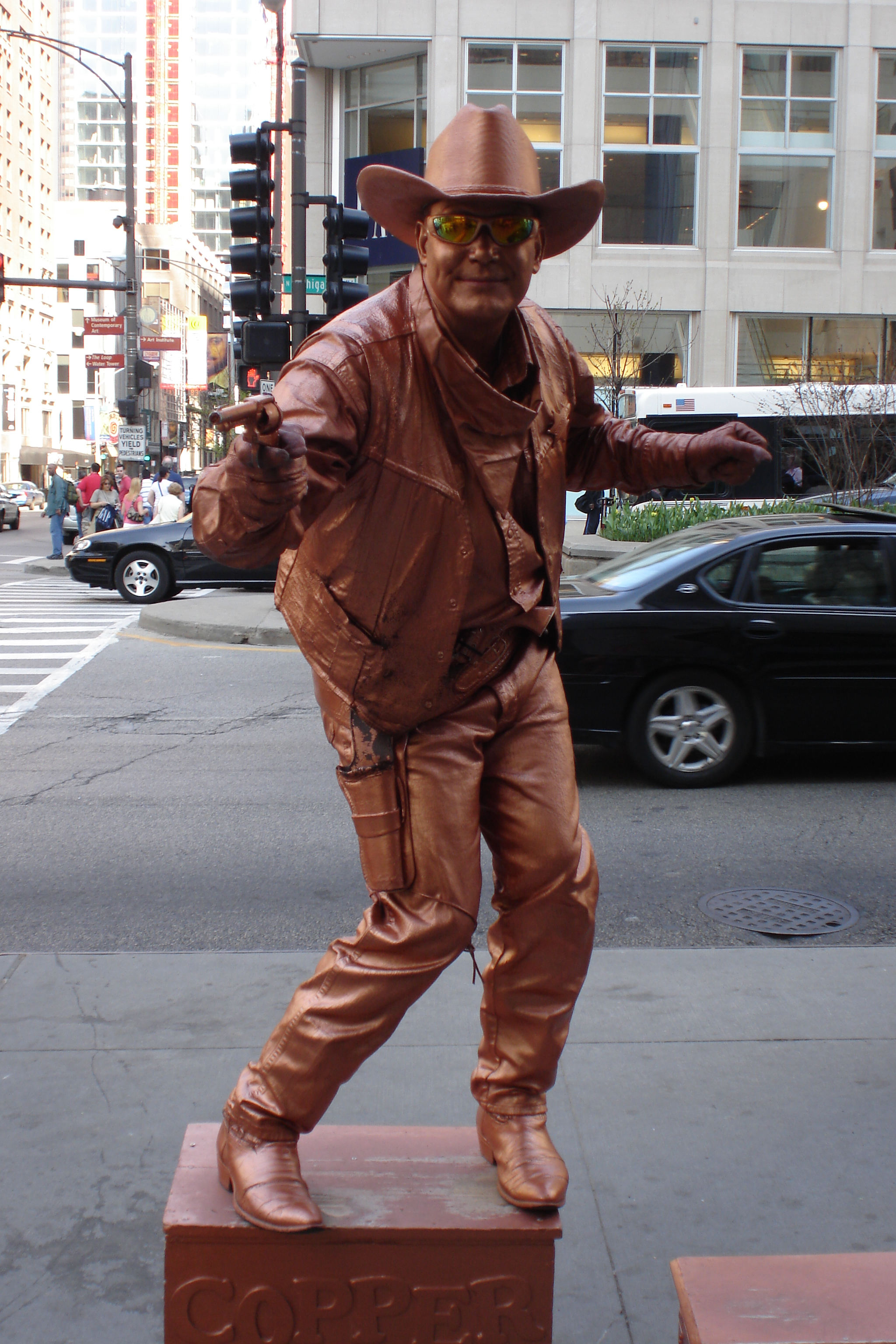|
Windmill Theatre
The Windmill Theatre in Great Windmill Street, London, was a variety and revue theatre best known for its nude '' tableaux vivants'', which began in 1932 and lasted until its reversion to a cinema in 1964. Many prominent British comedians of the post-war years started their careers at the theatre. As the Palais de Luxe Great Windmill Street took its name from a windmill that stood there from the reign of King Charles II until the late 18th century. In 1909 a cinema, the Palais de Luxe, opened on the site. It stood on the corner of a block of buildings that included the Apollo and Lyric theatres, where Archer Street joined Great Windmill Street, just off Shaftesbury Avenue. The building complex incorporates Piccadilly Buildings, an 1897 building which housed the offices of British Mutoscope and Biograph Company, an early producer of films. The Palais de Luxe was one of the first places where early silent films were shown. As larger cinemas were opened in the West End, bu ... [...More Info...] [...Related Items...] OR: [Wikipedia] [Google] [Baidu] |
City Of Westminster
The City of Westminster is a city and borough in Inner London. It is the site of the United Kingdom's Houses of Parliament and much of the British government. It occupies a large area of central Greater London, including most of the West End. Many London landmarks are within the borough, including Buckingham Palace, Westminster Abbey, Whitehall, Westminster Cathedral, 10 Downing Street, and Trafalgar Square. Westminster became a city in 1540, and historically, it was a part of the ceremonial county of Middlesex. Its southern boundary is the River Thames. To the City of Westminster's east is the City of London and to its west is the Royal Borough of Kensington and Chelsea. To its north is the London Borough of Camden. The borough is divided into a number of localities including the ancient political district of Westminster; the shopping areas around Oxford Street, Regent Street, Piccadilly and Bond Street; and the night-time entertainment district of Soho. Much of ... [...More Info...] [...Related Items...] OR: [Wikipedia] [Google] [Baidu] |
Moulin Rouge
Moulin Rouge (, ; ) is a cabaret in Paris, on Boulevard de Clichy, at Place Blanche, the intersection of, and terminus of Rue Blanche. In 1889, the Moulin Rouge was co-founded by Charles Zidler and Joseph Oller, who also owned the Paris Olympia. The original venue was destroyed by fire in 1915. Moulin Rouge is southwest of Montmartre, in the Paris district of Pigalle on Boulevard de Clichy in the 18th ''arrondissement'', it has a red windmill on its roof. The closest métro station is Blanche. Moulin Rouge is best known as the birthplace of the modern form of the can-can dance. Originally introduced as a seductive dance by the courtesans who operated from the site, the can-can dance revue evolved into a form of entertainment of its own and led to the introduction of cabarets across Europe. Today, the Moulin Rouge is a tourist attraction, offering predominantly musical dance entertainment for visitors from around the world. The club's decor still contains much of the roma ... [...More Info...] [...Related Items...] OR: [Wikipedia] [Google] [Baidu] |
Fan Dance
In the West, a fan dance (i.e., a dance performed with fans) may be an erotic dance performance, traditionally by a woman, but not exclusively. Beyond eroticism it is a form of musical interpretation. The performer, sometimes entirely nude or apparently so, dances while manipulating two or more large fans that can be constructed from many different materials including ostrich feathers, silks, velvet, sequined and organza fabrics. The unifying factor in all are the spins, or fan staves, that give form to this prop. In the 1970s gay men removed the solid pin at the center of the fan and replaced it with knotted string allowing for a fluid curvaceous movement. This disco art has been seen in San Francisco's Trocadero (perhaps first before the East's Paradise Garage), New York's Roseland Ballroom plus numerous circuit parties from Corbett Reynolds 1996 “Jungle Red” Party in Cleveland to the White and Winter Parties of Miami and London's 1998 Red Heart's Ball. More diffic ... [...More Info...] [...Related Items...] OR: [Wikipedia] [Google] [Baidu] |
Britannia
Britannia () is the national personification of Britain as a helmeted female warrior holding a trident and shield. An image first used in classical antiquity, the Latin ''Britannia'' was the name variously applied to the British Isles, Great Britain, and the Roman province of Britain during the Roman Empire. Typically depicted reclining or seated with spear and shield since appearing thus on Roman coins of the 2nd century AD, the classical national allegory was revived in the early modern period. On coins of the pound sterling issued by Charles II of England, Scotland, and Ireland, Britannia appears with her shield bearing the Union Flag. To symbolise the Royal Navy's victories, Britannia's spear became the characteristic trident in 1797, and a helmet was added to the coinage in 1825. By the 1st century BC, Britannia replaced Albion as the prevalent Latin name for the island of Great Britain. After the Roman conquest in 43 AD, ''Britannia'' also came to refer to the Roman ... [...More Info...] [...Related Items...] OR: [Wikipedia] [Google] [Baidu] |
Indigenous Peoples Of The Americas
The Indigenous peoples of the Americas are the inhabitants of the Americas before the arrival of the European settlers in the 15th century, and the ethnic groups who now identify themselves with those peoples. Many Indigenous peoples of the Americas were traditionally hunter-gatherers and many, especially in the Amazon basin, still are, but many groups practiced aquaculture and agriculture. While some societies depended heavily on agriculture, others practiced a mix of farming, hunting, and gathering. In some regions, the Indigenous peoples created monumental architecture, large-scale organized cities, city-states, chiefdoms, states, Realm, kingdoms, republics, Confederation, confederacies, and empires. Some had varying degrees of knowledge of engineering, architecture, mathematics, astronomy, writing, physics, medicine, planting and irrigation, geology, mining, metallurgy, sculpture, and gold smithing. Many parts of the Americas are still populated by Indigenous peoples; ... [...More Info...] [...Related Items...] OR: [Wikipedia] [Google] [Baidu] |
Mermaid
In folklore, a mermaid is an aquatic creature with the head and upper body of a female human and the tail of a fish. Mermaids appear in the folklore of many cultures worldwide, including Europe, Asia, and Africa. Mermaids are sometimes associated with perilous events such as floods, storms, shipwrecks, and drownings. In other folk traditions (or sometimes within the same traditions), they can be benevolent or beneficent, bestowing boons or falling in love with humans. The male equivalent of the mermaid is the merman, also a familiar figure in folklore and heraldry. Although traditions about and sightings of mermen are less common than those of mermaids, they are generally assumed to co-exist with their female counterparts. The male and the female collectively are sometimes referred to as merfolk or merpeople. The Western concept of mermaids as beautiful, seductive singers may have been influenced by the Sirens of Greek mythology, which were originally half-birdlike, but ... [...More Info...] [...Related Items...] OR: [Wikipedia] [Google] [Baidu] |
Annie Oakley
Annie Oakley (born Phoebe Ann Mosey; August 13, 1860 – November 3, 1926) was an American sharpshooter who starred in Buffalo Bill's Wild West show. Oakley developed hunting skills as a child to provide for her impoverished family in western Ohio. At age 15, she won a shooting contest against an experienced marksman, Frank E. Butler, whom she later married in 1876. The pair joined Buffalo Bill in 1885, performing in Europe before royalty and other heads of state. Audiences were astounded to see her shooting out a cigar from her husband's hand or splitting a playing-card edge-on at 30 paces. She earned more than anyone except Buffalo Bill himself. After a bad rail accident in 1901, she had to settle for a less taxing routine, and toured in a play written about her career. She also instructed women in marksmanship, believing strongly in female self-defense. Her stage acts were filmed for one of Thomas Edison's earliest Kinetoscopes in 1894. Since her death, her story has been ... [...More Info...] [...Related Items...] OR: [Wikipedia] [Google] [Baidu] |
London Pavilion
The London Pavilion is a building on the corner of Shaftesbury Avenue and Coventry Street on the north-east side of Piccadilly Circus in London. It is currently a shopping arcade and part of the Trocadero Centre. Early history The first building bearing the name, a music hall formed from roofing the yard of the Black Horse Inn, was built in 1859 for Emil Loibl, and Charles Sonnhammer. A gallery was constructed for the hall but it could not utilize the full width, because one part of the premises was used by Dr. Kahn's "Delectable Museum of Anatomy". In 1885, Shaftesbury Avenue was built through part of the site, and a new London Pavilion Theatre was constructed. This opened on 30 November 1885 with a popular revue. The new theatre was the first 'music hall deluxe', with marble-topped tables for dining in the auditorium. According to Charles Stuart and A. J. Park in ''The Variety Stage'' (1895) the rebuilding signaled a new era of variety theatre:Hitherto the halls had borne ... [...More Info...] [...Related Items...] OR: [Wikipedia] [Google] [Baidu] |
Piccadilly Theatre
The Piccadilly Theatre is a West End theatre located at 16 Denman Street, behind Piccadilly Circus and adjacent to the Regent Palace Hotel, in the City of Westminster, London, England. Early years Built by Bertie Crewe and Edward A. Stone for Edward Laurillard, its simple façade conceals a grandiose Art Deco interior designed by Marc-Henri Levy and Gaston Laverdet, with a 1,232-seat auditorium decorated in shades of pink. Gold and green are the dominant colours in the bars and foyer, which include the original light fittings. Upon its opening on 27 April 1928, the theatre's souvenir brochure claimed, "If all the bricks used in the building were laid in a straight line, they would stretch from London to Paris." The opening production, Jerome Kern's musical ''Blue Eyes'', starred Evelyn Laye, one of the most acclaimed actresses of the period. [...More Info...] [...Related Items...] OR: [Wikipedia] [Google] [Baidu] |
Music Hall
Music hall is a type of British theatrical entertainment that was popular from the early Victorian era, beginning around 1850. It faded away after 1918 as the halls rebranded their entertainment as variety. Perceptions of a distinction in Britain between bold and scandalous ''Music Hall'' and subsequent, more respectable '' Variety'' differ. Music hall involved a mixture of popular songs, comedy, speciality acts, and variety entertainment. The term is derived from a type of theatre or venue in which such entertainment took place. In North America vaudeville was in some ways analogous to British music hall, featuring rousing songs and comic acts. Originating in saloon bars within public houses during the 1830s, music hall entertainment became increasingly popular with audiences. So much so, that during the 1850s some public houses were demolished, and specialised music hall theatres developed in their place. These theatres were designed chiefly so that people could consume f ... [...More Info...] [...Related Items...] OR: [Wikipedia] [Google] [Baidu] |
Tableaux Vivants
A (; often shortened to ; plural: ), French for "living picture", is a static scene containing one or more actors or models. They are stationary and silent, usually in costume, carefully posed, with props and/or scenery, and may be theatrically lit. It thus combines aspects of theatre and the visual arts. A tableau may either be 'performed' live, or depicted in painting, photography and sculpture, such as in many works of the Romantic, Aesthetic, Symbolist, Pre-Raphaelite, and Art Nouveau movements. In the late 19th and early 20th centuries, tableaux sometimes featured ('flexible poses') by virtually nude models, providing a form of erotic entertainment, both on stage and in print. Tableaux continue to the present day in the form of living statues, street performers who busk by posing in costume. Origin Occasionally, a Mass was punctuated with short dramatic scenes and painting-like . They were a major feature of festivities for royal weddings, coronations and royal ... [...More Info...] [...Related Items...] OR: [Wikipedia] [Google] [Baidu] |
Living Statue
A living statue is a performer who poses as a statue or mannequin, usually with realistic statue-like makeup, Performances are commonly on the street busking but may also be at events where the artist is paid. A living statue attraction, as a performance, is the artist's ability to stand motionless and occasionally come to life to comic or startling effect. History The tableau vivant, or group of living statues, was a regular feature of medieval and Renaissance festivities and pageantry, such as royal entries by rulers into cities. Typically a group enacting a scene would be mounted on an elaborate stand decorated to look like a monument, placed on the route of the procession. A living statue appeared in a scene of the 1945 French masterpiece film ''Les enfants du paradis'' (''Children of Paradise''), and early living statue pioneers include the London-based artists Gilbert and George in the 1960s. In the early years of the 20th century, the German dancer Olga Desmond put on ... [...More Info...] [...Related Items...] OR: [Wikipedia] [Google] [Baidu] |




_2007.jpg)





